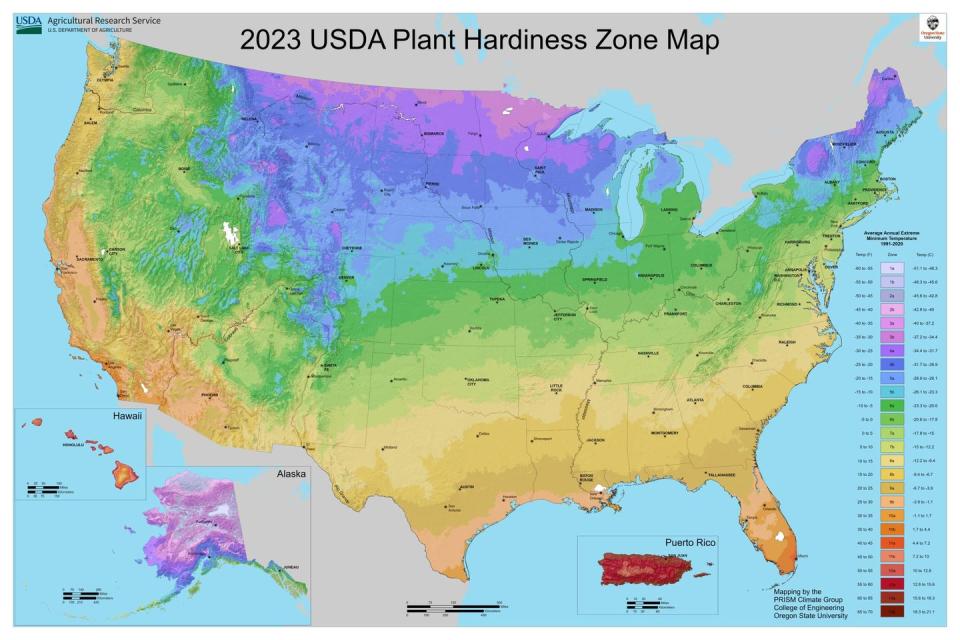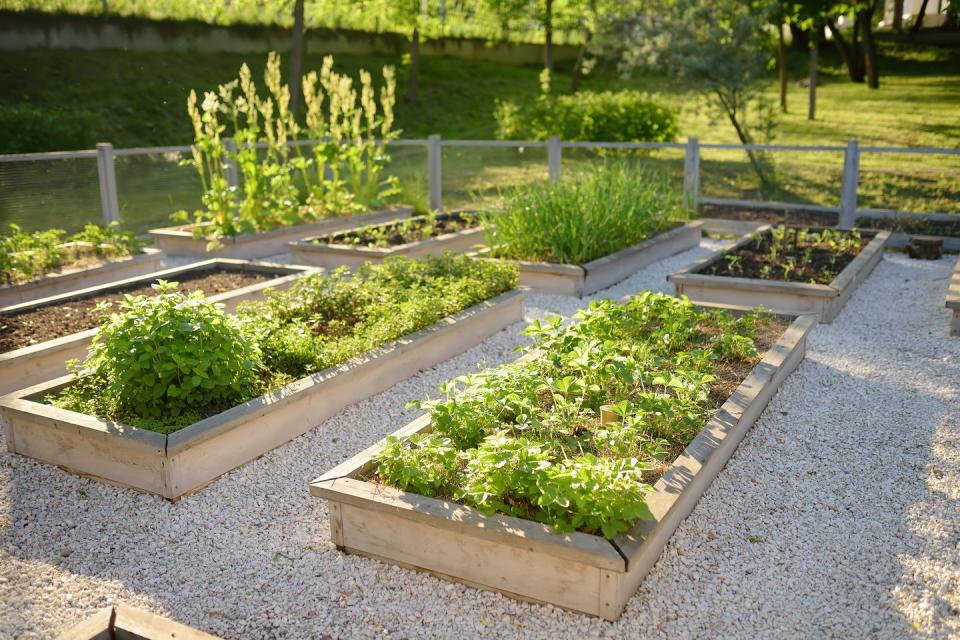Here's How to Use the USDA's Plant Hardiness Zone Map
Whenever you purchase a new perennial plant, shrub, tree, or even seeds, you've probably noticed information about hardiness zones on the plant tag or description. But what does it mean? "Plant hardiness zones are a way to measure and understand a plant's ability to survive winter in varied climates across the country," says Stacey Hirvela, horticulturist with Proven Winners Color Choice Shrubs. "It's a good starting point for deciding whether a plant is suited to your climate, but it doesn't tell the whole story."
Devised by the United States Department of Agriculture (USDA), the map is divided into 10-degree increments and is updated periodically based on statistical analysis of annual minimum temperatures gathered over a period of years in every region of the country. Interestingly, the first edition of the plant hardiness zone map was created by Arnold Arboretum at Harvard in 1927! And believe it or not, the most recent version of the USDA plant hardiness zone map was updated just last year—for the first time since 2012. While other gardening maps have been developed through the years by other organizations, most have not been widely adopted.
Speaking of that new map, there are some major changes to note as you start planting for the season. So, before you grab your gardening tools and gloves, here's what else you need to know about plant hardiness zones:
What are plant hardiness zones?
Whether you've always had a green thumb or are experimenting in the garden, you'll want to understand the meaning of plant hardiness zones before you get to digging. Plant hardiness zones are geographical regions defined by their minimum growing temperatures to help gardeners determine which plants are most likely to thrive in their area. According to the USDA, these zones are "based on the average annual extreme minimum winter temperature." They are displayed as "10-degree F zones ranging from zone 1 (coldest) to zone 13 (warmest). Each zone is divided into half zones designated as 'a' and 'b'." The purpose of the zones is to help people select plants that are suitable for their local climate while avoiding those that are likely to struggle or perish due to extreme temperatures.
Additionally, the USDA has created a free, easy-to-use interactive verison of their map for you to check your zone! Just type in your zip code to get a zoomed in, color-coded view of your area with all the information you need.
The hardiness zone map is not a guarantee your plant will survive.
It's important to understand that the USDA hardiness zone is an indication of which plants are most likely to thrive in a location. But that doesn't take into account other environmental factors, says Hirvela. Other issues that may affect a plant's survival include the effects of elevation, a windy location, humidity levels, and microclimates caused by radiant heat from your house, which can raise the temperature a few degrees for plants close to the wall.

For example, Seattle, Washington, and the city of Austin, Texas, are both in the USDA hardiness zone 9a because the map is a measure of the coldest temperature a plant can handle. But they're vastly different climates, and the same agave that would thrive in Texas isn't going to like the humidity in Seattle, explains Hirvela. And even if a plant manages to make it through the winter, that doesn't mean it's a great candidate for your yard. "A lot of plants survive winter but look awful," says Hirvela. That's when it's helpful to talk to local nurseries and growers, who can offer input on what thrives and what doesn't in your region.
In addition, the map also doesn't address how long plants can survive cold temperatures in a zone, says Hirvela. So, while your perennial might tolerate a few hours at -20 degrees F, it might not be able to take a whole day or several days of those kinds of temperatures. Only time will tell next spring! (P.S. Don't be too eager to yank a plant out of the ground in spring if it doesn't leaf out right away. Give it a chance to recover, and it may be just fine.)
The map isn't great for assessing how heat affects plants.
Unfortunately, the hardiness zone map is not particularly useful for evaluating how much heat plants can tolerate, says Hirvela. That means it has limited value in hot climates because it doesn't tell you the upper temperature limits. Again, this is when it's helpful to chat to local garden shops, who can offer insight about which plants will thrive in your conditions.

Why is it important to know your plant hardiness zone?
Ultimately, by choosing plants that are appropriate for your zone, you're saving yourself both time and money—because there's no point in investing your resources when your garden won't last the next change in weather. Following the USDA map helps increase the likelihood of your garden thriving through various weather conditions, including winter cold snaps. You'll also be able to maintain your garden more effectively since you can more easily determine the appropriate timing for planting, transplanting, and protecting your plants. What's more, your plants will actually require less water and maintenance as they are naturally adapted to the local climate conditions.
Pay attention to zones when shopping online.
When browsing the best places to buy seeds, many online nurseries will ask for your zip code to advise you on your hardiness zone; they also may tell you when a plant is not suited to your area, though they may still ship it at your request. Big box retailers typically ship a plant to any hardiness zone regardless of where you live.
But even if the tag says a plant won't survive winters in your area, it's fine to experiment! "If it's a $15 perennial, don't be afraid to try it and make accommodations for it, such as mulching or overwintering it indoors," says Hirvela. "That's part of the fun of gardening." And like most things in life, you'll learn just as much from your failures as your successes!
You Might Also Like

